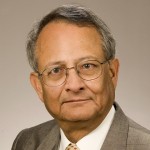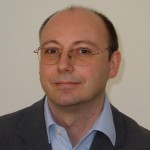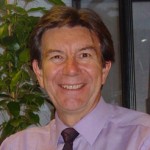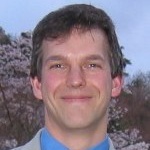Call for Papers
Important Dates
Keynote Speakers
Special Sessions
Paper Submission
Technical Program
Registration
Journals and Book
Venue
Travel Information
Accommodation
Committees
Sponsors
ELMAR History
KEYNOTE SPEAKERS
|
|
|
Testbeds and Rapid Prototyping in Wireless Systems Univ.Prof. Dr.techn. Markus Rupp Vienna University of Technology |
|
GNSS Data Modeling: The Key to Increasing Safety Professor Paul Cross Department of Civil, Environmental |
|
The Role of Resonators in the Generation of Voice Signals Dr.-Ing. Malte Kob Department of Phoniatrics, Pedaudiology, |
Image Processing Using Quadratic Volterra Filters - CANCELED !
Professor Sanjit K. Mitra
Ming Hsieh Department of Electrical Engineering
University of Southern California
Los Angeles, California
USA
Abstract:
Two-dimensional quadratic Volterra operators developed for edge enhancement are reviewed. A number of practical image processing applications of these filters are then considered and the proposed algorithms are outlined. These applications include image contrast enhancement, impulse noise removal, image zooming, and image half- toning. In each of these applications, it is shown that the processed images appear perceptually much better in quality than those obtained using many other well-known methods.
About the Keynote Speaker:
Sanjit K. Mitra is the Stephen and Etta Varra Professor of Engineering in the Department of Electrical Engineering, University of Southern California, Los Angeles. He has published over 640 papers in the areas of analog and digital signal processing, and image processing. He has also authored and co-authored twelve books, and holds five patents. He has been awarded Honorary Doctorate degrees from the Tampere University of Technology, Finland, the Technical University of Bucharest, Romania, and the Technical University of Iasi, Romania, and the University Medal of the Slovak Technical University, Bratislava. He is a member of the U.S. National Academy of Engineering, a member of the Norwegian Academy of Technological Sciences, an Academician of the Academy of Finland, a corresponding member of the Croatian Academy of Sciences and Arts, corresponding member of the Academy of Engineering, Mexico, and a Foreign Fellow of the National Academy of Sciences, India and the Indian National Academy of Engineering.
Keynote Speaker's web-page:
http://ee.usc.edu/faculty_staff/faculty_directory/smitra.htm
Testbeds and Rapid Prototyping in Wireless Systems
Univ.Prof. Dr.techn. Markus Rupp
Vienna University of Technology
AUSTRIA
Abstract:
Wireless transceivers become more and more complex. Due to tight time to market constraints, industry abandons time consuming and costly prototyping and relies their designs entirely on simulation results. However, such a development strategy is very risky. Prototyping on the other hand offers de-risking when communication systems based on new technology are to be developed. In order to be accepted in industrial design flows prototyping must become rapid. This talk presents numerous examples for wireless designs. We hereby distinguish between a wireless testbed that allows for a quick performance of real-time experiments, utilizing the wireless channel while a postprocessing is required in offline mode. Examples include Space-Time-Code design, adaptive equalizers, MIMO HSDPA, MIMO WiMAX as well as MIMO antenna designs. On the other hand prototyping allows for fixed-point solutions and design space exploration, comparing various hardware architectures. A special design flow offers rapid prototyping of heterogeneous DSP and FPGA structures allowing for few people to convert algorithmic design ideas into real-time experiments. Presented examples include MIMO WLAN systems, channel emulators and adaptive predistortion techniques for power amplifiers.
About the Keynote Speaker:
Markus Rupp received his Dipl.-Ing. degree in 1988 at the University of Saarbruecken, Germany and his Dr.-Ing. degree in 1993 at the Technische Universitaet Darmstadt, Germany, where he worked with Eberhardt Haensler on designing new algorithms for acoustical and electrical echo compensation. From November 1993 until July 1995, he had a postdoctoral position at the University of Santa Barbara, California with Sanjit Mitra where he worked with Ali H. Sayed on a robustness description of adaptive filters with impact on neural networks and active noise control. From October 1995 until August 2001 he was a member of the Technical Staff in the Wireless Technology Research Department of Bell-Labs at Crawford Hill, NJ, where he worked on various topics related to adaptive equalization and rapid implementation for IS-136, 802.11 and UMTS. He is presently a full professor for Digital Signal Processing in Mobile Communications at the Technical University of Vienna. He was associate editor of IEEE Transactions on Signal Processing from 2002-2005, is currently associate editor of JASP EURASIP Journal of Applied Signal Processing, JES EURASIP Journal on Embedded Systems, Research Letters in Signal Processing, Research Letters in Communications, and is elected AdCom member of EURASIP. He authored and co-authored more than 250 papers and patents on adaptive filtering, wireless communications, and rapid prototyping, as well as automatic design methods.
Keynote Speaker's web-page:
http://www.nt.tuwien.ac.at/about-us/staff/markus-rupp/
GNSS Data Modeling: The Key to Increasing Safety and Legally Critical Applications of GNSS
Professor Paul Cross
Professor of Space Geodesy
Department of Civil, Environmental and Geomatic Engineering
University College London
UNITED KINGDOM
Abstract:
GNSS is increasingly being used for safety critical applications such as aircraft navigation and to replace railway signaling, and legally critical applications such as offender tracking and road user charging. The most important performance indicator for such applications is integrity and to assess integrity it is crucial to understand fully the nature of GNSS pseudo-range and phase errors. Today these are often estimated as additional parameters in the position solution or their effects minimized through stochastic modeling. Whilst these tactics work well in terms of delivering a good quality position they do not necessarily lead to a better understanding of all of the errors in the positioning process and therefore make quality assessment less scientific. A more rigorous approach based on the physical modeling of as many errors as possible can be expected to provide a more complete insight into the quality of GNSS positioning and especially into integrity. This talk reviews the current state of the art in such modeling.
About the Keynote Speaker:
Paul Cross is currently Professor of Space Geodesy at University College London (UCL), a post he has held for the last ten years. He obtained his PhD from the University of Nottingham in 1970 and before joining UCL held teaching and research positions at the Universities of Nairobi, East London, Stuttgart and Newcastle. His main research interest is in precise GNSS positioning and he currently concentrates on engineering, safety critical and geophysical applications. He also carries out basic research into GNSS multipath, orbit and clock modelling, and ambiguity determination, especially within RTK networks.
Keynote Speaker's web-page:
http://www.ucl.ac.uk/ge/People/Staff/acad_staff/paul_cross
The Role of Resonators in the Generation of Voice Signals
Dr.-Ing. Malte Kob
Department of Phoniatrics, Pedaudiology,
and Communication Disorders
RWTH Aachen
University,
Aachen
GERMANY
Abstract:
Voice signals are the result of a complex interaction of physical and physiological processes. The properties of the voice signal are essentially determined by the configuration of the phonatory and articulatory organs. Resonators play an important role in both domains, i.e. for the generation of the voice source in the larynx and for the sound forming in the vocal tract. In this talk fundamentals of voice production and their relation to voice signal properties are reviewed. Resonator configurations and their effect in specific cases of voice production such as overtone singing are discussed.
About the Keynote Speaker:
Malte Kob studied electrical engineering at the Technical University of Braunschweig with focus on signal processing, telecommunication engineering and semiconductor physics. He received his doctoral degree in engineering sciences from RWTH Aachen University, Germany, in 2002. Since 2001, he is head of the section `Voice and Hearing Acoustics' of the Department of Phoniatrics, Pedaudiology, and Communication Disorders at the University Hospital Aachen, Faculty of Medicine of RWTH Aachen University. He works in teaching and research in the fields of medical acoustics, voice assessment & classification and occupational voice disorders. He received the promotion award of the German Society of Phoniatrics & Pedaudiology (DGPP) in 2003 and the Cremer award from the German Acoustical Society (DEGA) in 2005. Malte Kob authored and coauthored more than 60 books, articles, research reports and conference presentations. He is member of the Executive Council of the European Acoustics Association (EAA) and of the management committee of COST action 2103 "Advanced Voice Function Assessment". He is a member of ASA, DEGA and DPG and an ambitious Jazz musician (p,b).
Keynote Speaker's web-pages:
http://www.phoniatrie.ukaachen.de
http://www.akustik.rwth-aachen.de/~malte



